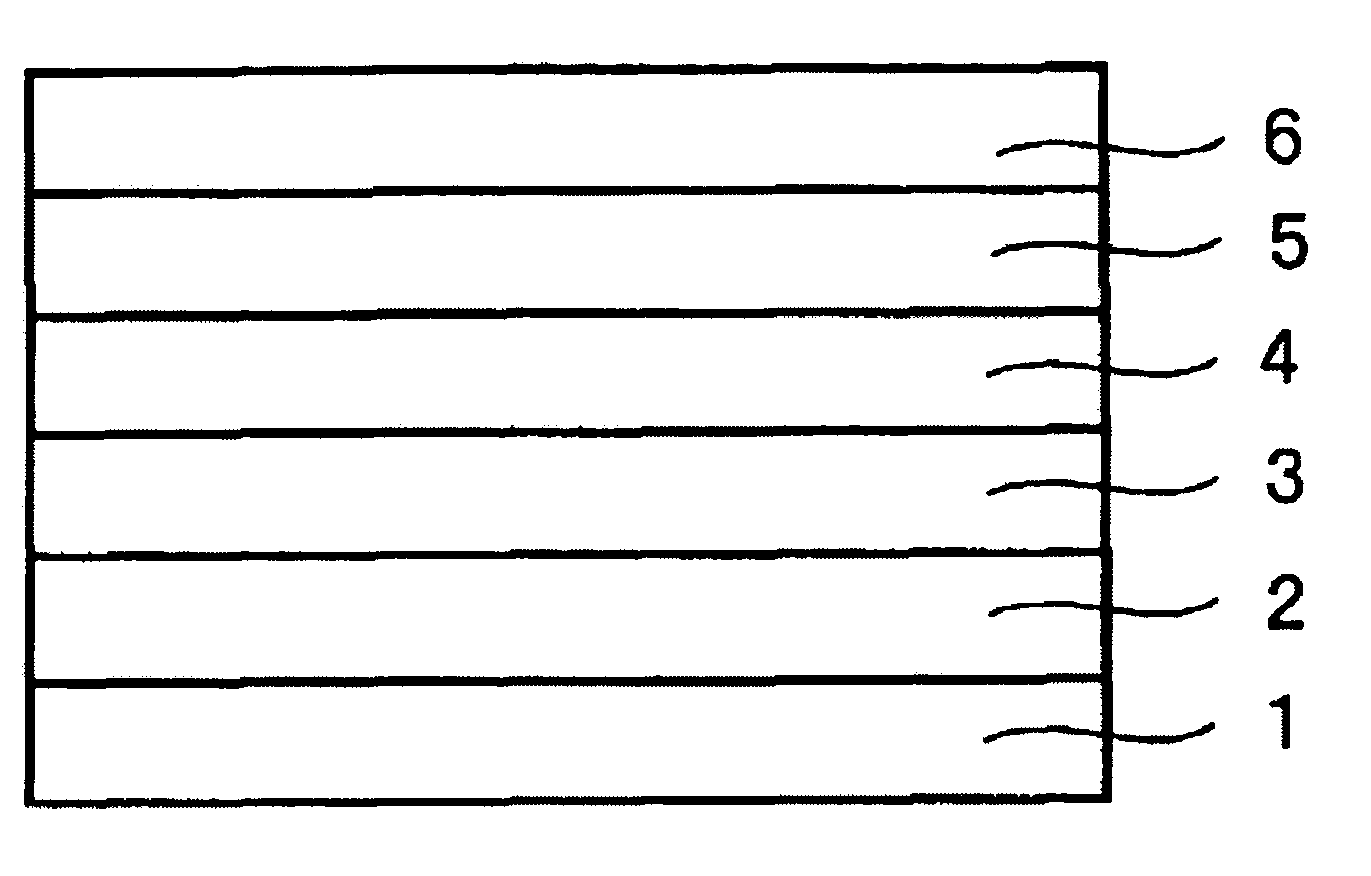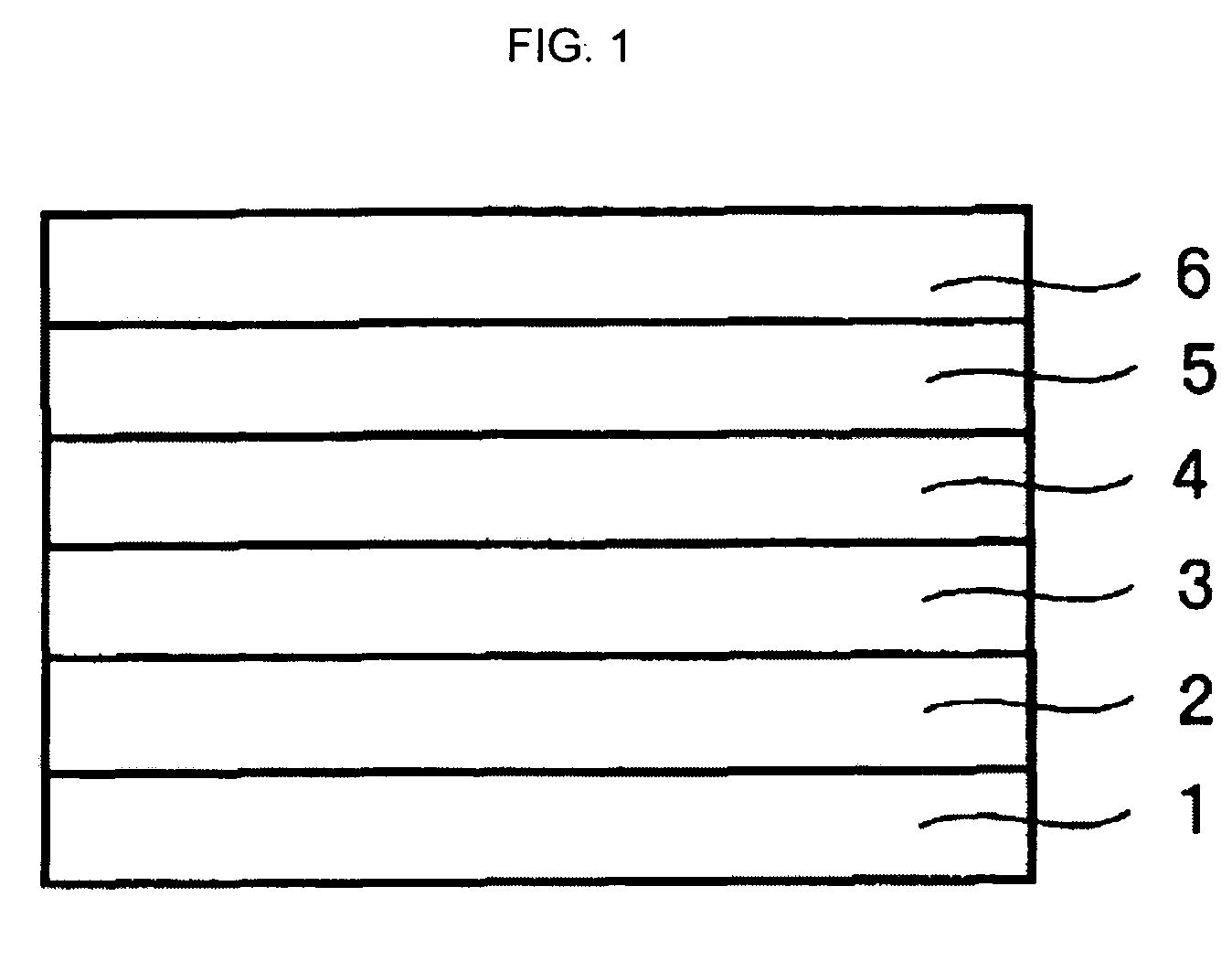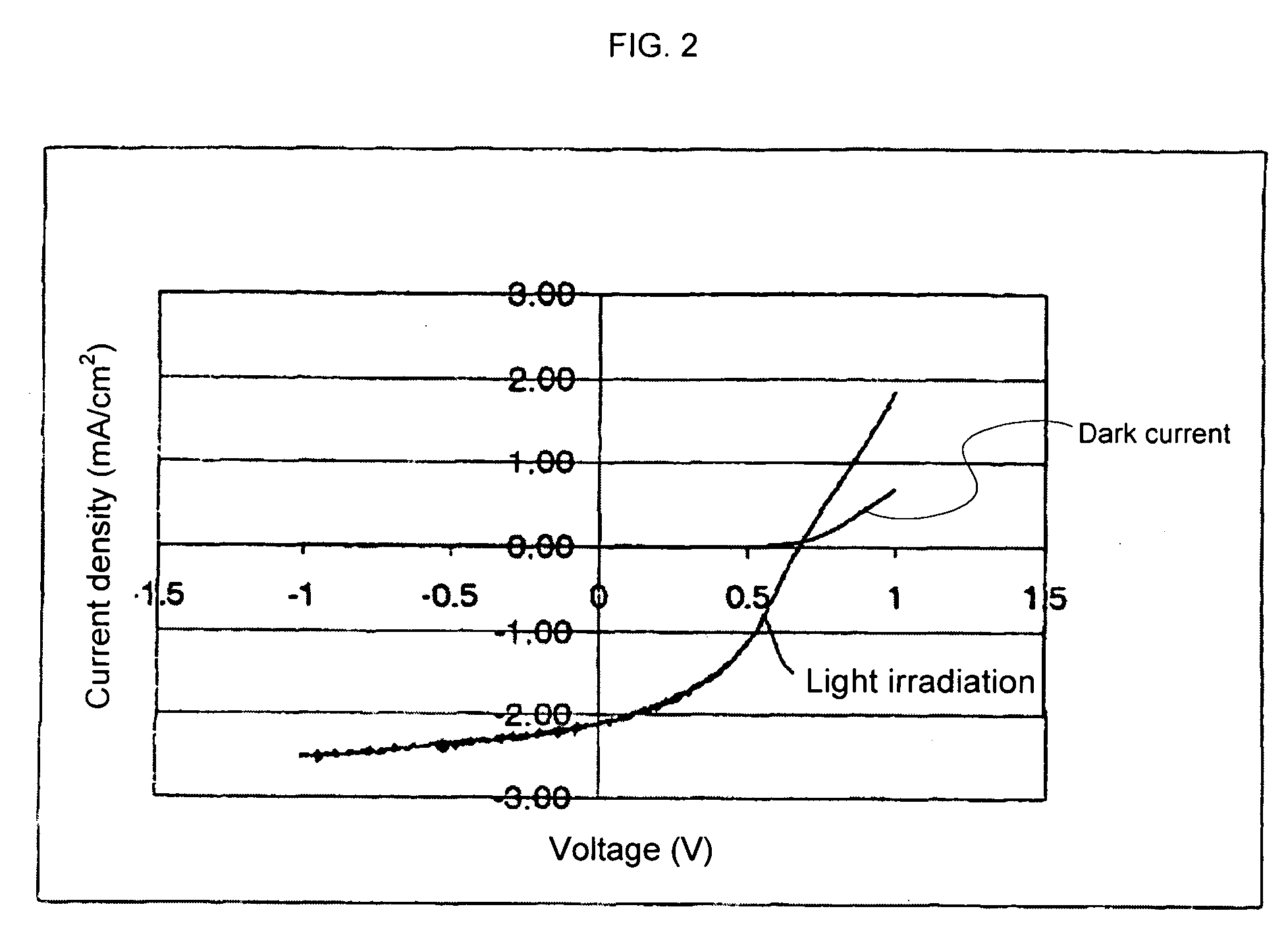Organic photovoltaic cell and manufacturing method therefor
a photovoltaic cell and organic technology, applied in the field of organic photovoltaic cells, can solve the problems of insufficient photoelectric conversion efficiency, inability to fabricate elements in low cost, and difficulty in obtaining film with high evenness, and achieve low environmental load, low cost, and high safety.
- Summary
- Abstract
- Description
- Claims
- Application Information
AI Technical Summary
Benefits of technology
Problems solved by technology
Method used
Image
Examples
embodiment 1
[0098] The organic photovoltaic cell shown in FIG. 1 is fabricated by using a compound 1 (JL157) as a p-type polymer. An electron transport layer is formed from fullerene (C60), and a cathode is formed from Al. The organic photovoltaic cell according to this embodiment has the following layer structure. The numbers in (parenthesis) indicate film thickness.
[0099] ITO / PEDOT (50 nm) / JL157 (30 nm) / C60 (50 nm) / Al (80 nm)
[0100] The photoelectric conversion characteristics were evaluated by emitting light of approximately 100 mW / cm2 of irradiation intensity, spectrum AM (Air Mass) 1.5 on the organic photovoltaic cell obtained.
[0101]FIG. 2 shows voltage-current density characteristics. In the figure, the upper curve indicates the characteristics of dark current, and the lower curve indicates the characteristics at light irradiation.
[0102]FIG. 3 show the wavelength dependence of photoelectric current.
[0103] Short circuit current (Isc), open voltage (Voc), fill factor (ff), and photoelec...
embodiment 2
[0104] The organic photovoltaic cell shown in FIG. 1 is fabricated by using a compound 1 (JL157) as a p-type polymer. An electron transport layer is formed from PV, and a cathode is formed from Ag. The organic photovoltaic cell according to this embodiment has the following layer structure.
[0105] ITO / PEDOT (50 nm) / JL157 (30 nm) / PV (30 nm) / Ag (50 nm)
[0106] The photoelectric conversion characteristics were evaluated by emitting light of approximately 100 mW / cm2 of irradiation intensity, spectrum AM (Air Mass) 1.5 on the organic photovoltaic cell obtained.
[0107]FIG. 4 shows voltage-current density characteristics. In the figure, the upper curve indicates the characteristics of dark current, and the lower curve indicates the characteristics at light irradiation.
[0108]FIG. 5 shows the wavelength dependence of photoelectric current.
[0109] Short circuit current (Isc), open voltage (Voc), fill factor (ff), and photoelectric conversion efficiency of the organic photovoltaic cell for thi...
embodiment 3
[0110] The organic photovoltaic cell shown in FIG. 1 is fabricated by using a compound 1 (JL157) as a p-type polymer, blending with PCBM of n-type material in 1:3 by weight, and forming a p-type polymer layer. An electron transport layer is formed from PV, and a cathode is formed from Ag. The organic photovoltaic cell according to this embodiment has the following layer structure.
[0111] ITO / PEDOT (50 nm) / JL157:PCBM (1:3)(50 nm) / PV(30 nm) / Ag (50 nm) PCBM has the following structure.
[0112] The photoelectric conversion characteristics were evaluated by emitting light of approximately 100 mW / cm2 of irradiation intensity, spectrum AM (Air Mass) 1.5 on the organic photovoltaic cell obtained.
[0113]FIG. 6 shows voltage-current density characteristics. In the figure, the upper curve indicates the characteristics of dark current, and the lower curve indicates the characteristics at light irradiation.
[0114]FIG. 7 shows the wavelength dependence of photoelectric current.
[0115] Short circu...
PUM
| Property | Measurement | Unit |
|---|---|---|
| Efficiency | aaaaa | aaaaa |
| Efficiency | aaaaa | aaaaa |
| Efficiency | aaaaa | aaaaa |
Abstract
Description
Claims
Application Information
 Login to View More
Login to View More - R&D
- Intellectual Property
- Life Sciences
- Materials
- Tech Scout
- Unparalleled Data Quality
- Higher Quality Content
- 60% Fewer Hallucinations
Browse by: Latest US Patents, China's latest patents, Technical Efficacy Thesaurus, Application Domain, Technology Topic, Popular Technical Reports.
© 2025 PatSnap. All rights reserved.Legal|Privacy policy|Modern Slavery Act Transparency Statement|Sitemap|About US| Contact US: help@patsnap.com



